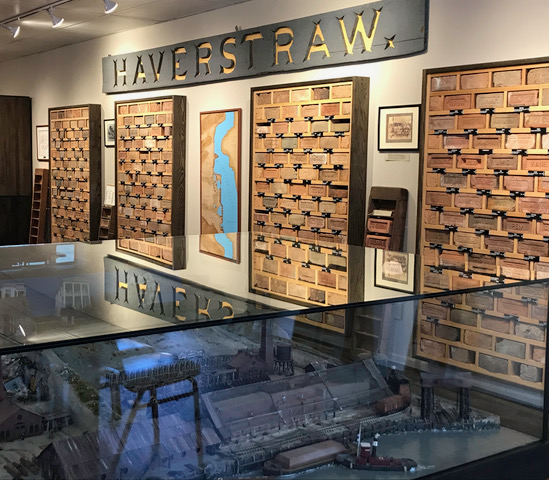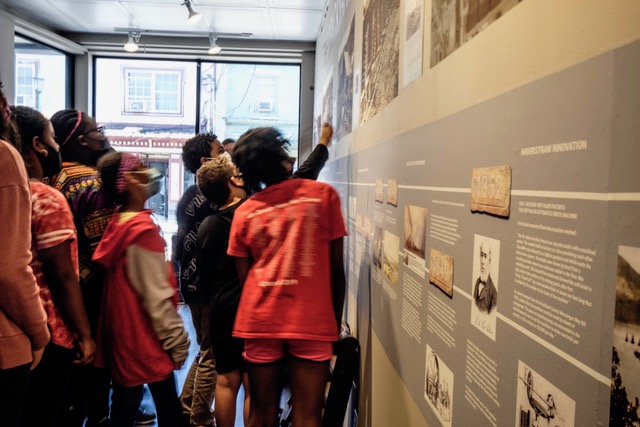The Haverstraw Brick Museum is rebuilding its facilities in a $3 million renovation project to create a state-of-the-art museum. The renovation will increase the museum’s capacity to offer educational and public programming and restore the original 19th-century structure. It will add space for the museum’s collection, archives, staff offices, a terrace roof garden, and an ADA-compliant back entrance. They will also create the “Center for Innovation,” a space dedicated to examining historical and contemporary fine art and architectural tradecrafts that use clay as a creative and construction medium.

“The original concept for the expansion and renovation began as part of the $10 million Downtown Revitalization Initiative awarded by Governor Hochul in 2022 to Haverstraw in partnership with the Village of Ossining,” said Rachel Whitlow, Executive Director of the Haverstraw Brick Museum. “Haverstraw and Ossining are sister villages located across the Hudson River from each other. The idea was that both waterfronts and main streets would berevitalized together. The museum was awarded $1.5 million from this grant.”
Founded in 1995, the Haverstraw Brick Museum preserves the history of the brick industry of North Rockland County. The museum is located on Main Street and is within walking distance to the Village Hall, schools, and the community center. “There is three miles of unused riverfront,” said Whitlow. “The remaining riverfront property is included in the Downtown Revitalization project with a hotel, restaurant, and housing development , connecting Main Street with the riverfront. Because the museum is located on Main Street, we are part of this revitalization.”
In 1815, brick-making was one of the Hudson River Valley’s most profitable and largest industries with brickyards stretching as far north as Albany. By the 1880s, there were over 40 brickyards in the Haverstraw area with brick-making the dominant profession. With easy access to New York City via the Hudson River, and to the west via the Erie Canal, over 300 million bricks from 41 brickyards were shipped out of Haverstraw each year. Building construction in New York City was using one billion bricks annually from the Rockland County area.
“Bricks from this small village created the infrastructure for two thirds of New York City,” said Whitlow. “New York City is home to some of the largest infrastructure construction and residential buildings in the world. It’s the Lincoln and the Brooklyn Battery tunnels, and neighborhoods like the Upper West Side and Harlem. Most of Harlem was built with bricks from Haverstraw.”
With new programming and this expansion, the museum plans on sharing more of the stories of the brick workers as well. “The Village of Haverstraw is one of the oldest continuously integrated Sanctuary Towns that provided an opportunity for foreign immigrants and African Americans who came North in the The Great Migration to work and live. Their combined labors contributed to building one of the greatest cities in the world.” During the Great Migration in the early 20th century, Black Southerners were recruited by brickyard owners, who would pay for their travel expenses. 60% of the workforce in the brickyards of Haverstraw were Black. “This is significant information that we want to share, especially with people who live in New York City. It will be a main focus on the first floor of the new museum.”
The Building
“Our project theme is ‘learn the past, discover the future.’ The museum design incorporates this perspective with the front of the building restored to the 1800s and the rear incorporating more contemporary brick designs.”

The collections storage and kilns for the museum’s Center for Ceramic Innovation will be located in the basement.
The first floor is designed around a large central space exhibition space dedicated to Haverstraw’s history from 1616 to the 1940s. It will focus on brickyard history, immigration and migration, steam-driven innovations, geology, and earth science, and will host community programs.
The second floor’s Center for Innovation is designed for hands-on learning and includes the Center for Ceramic Innovation, a 3D printing lab, classroom space, and artists in resident exhibition spaces. The National Endowment for the Arts awarded $40,000 to the museum to create this maker space for ceramic art and new brick construction. “Our goal is to draw visitors and tourists from all over the world as the brick industry once did,” said Whitlow. “Through the Center, we will offer after-school programs, residency programs for visiting artists and architects, and hands-on learning for our local students and community center. “ It’s going to be our place to experiment and play.”

The third floor is dedicated to the museum’s research library, paper and photo archives, staff offices,and meeting rooms. “Our archives go back to the 1700s and only about 1% are on display now. We hope to create a public research library for our paper and photographic archives.”
The roof design includes sculptures, native plants, a butterfly garden, and “New Brick” living sculptures from the collection. “The fourth floor will be our place of discovery and our environmental teaching center will focus on telling the story of the impact of the Hudson River as an economic driver and as an estuary. Most of the brickyards along the Hudson River are now underwater. Years of use had a tremendous impact on the environment and the shoreline of the Hudson. ” Haverstraw hopes to join other New York climate-smart communities by focusing on renewable energy throughout DRI building initiatives.
The museum previously underwent a $45,000 renovation in 2019 that included building repairs as well as an exhibition reinstallation. The museum currently operates in a 2,000-square-foot space. “Sometimes being small can be an advantage because you can pivot quickly,” said Whitlow. It also allowed the museum to focus on strategic partnerships with the Croton Aqueduct for exhibitions and programming. The museum gets about 4,000 visitors annually, many of them from school groups. “The strongest part of our programming is our STEAM education. The idea of play is part of our philosophy that innovation comes from exploration. How do we give students today the ability to do that?”
Whitlow anticipates it will take six years to complete the project. “Being in the heart of downtown makes us a resource for the local community and that aligns with our mission that includes providing a unique perspective into America’s cultural heritage.We are excited for this project to attract more visitors to the museum and to Haverstraw.”
Learn more about the Haverstraw Brick Museum: https://www.haverstrawbrickmuseum.org/
